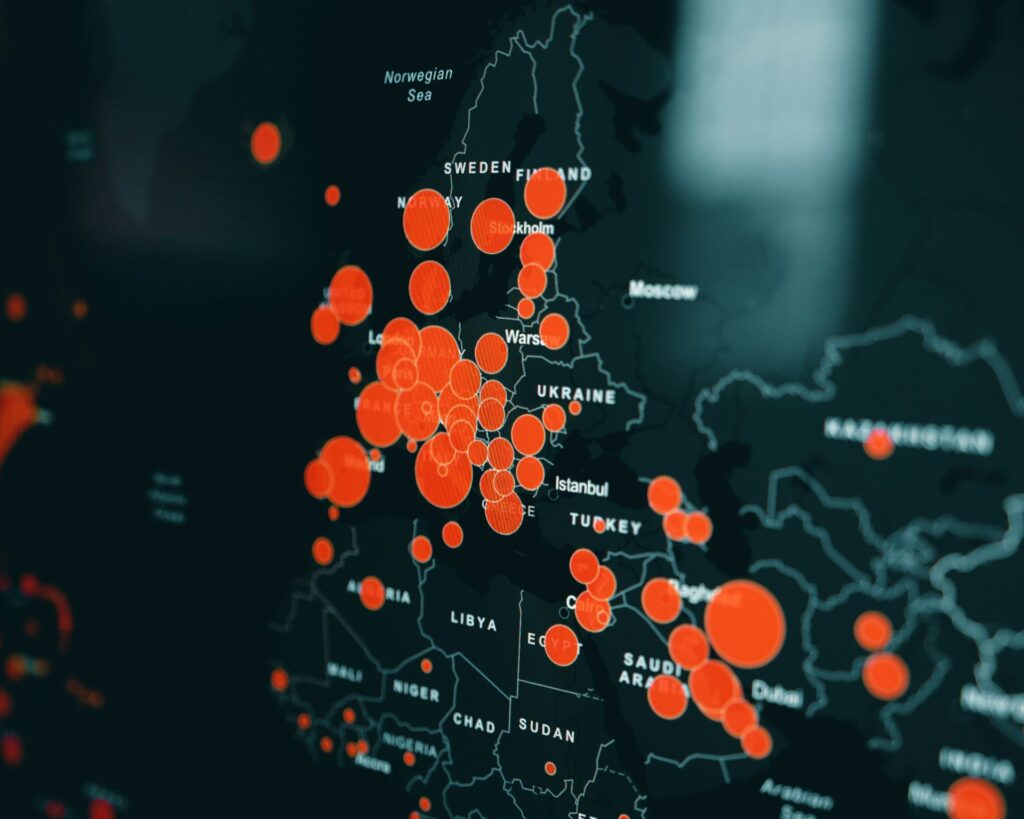Bringing data to life

By Matt Walpole, Head of Design
Having worked through the age of Big Data, I’ve seen the impact this explosion of information has had on both B2B and B2C brands. With such a wealth of customer and industry data in our hands and at a deeper level than ever before, one common challenge our clients face is, “I’ve collected all this information, but I don’t know how to show it off…Please help.” We’ve all sat through bland presentations with repetitive graphs that become meaningless as your eyes begin to gloss over, we know using this data in an engaging way is not as simple as exporting bloated spreadsheets.
What we look to do at Aspectus is embrace this world of data and ensure its brought to life in a way that is useful for clients and engaging for their audience. As I mentioned before, we aren’t in the world of just taking clients’ data, applying some brand colors and then spitting out generic bar charts. There are some core methodology processes that we look to implement to ensure we’re showing the right information in the best way possible.
Breaking Down the Science
Eye-tracking
We’ve all become accustomed how supermarkets stack their shelves; we know they place the items they want us to purchase at eye level as that is what ‘eye-tracking’ systems have told them. Well, the same techniques apply to data visualization. When creating data graphics, we ensure that there are minimal eye movements required. Sounds simple but can often be overlooked. It’s common to see keys and legends sitting far away from the output data that relies on your audience having to consistently scan across layouts to understand the information. We look to minimize the effect of negative eye-tracking in order help absorb data effectively and without fatigue.
Cognitive load
This really embraces the ability of your audience to extrapolate insights from your data visuals. Once we have established what the most important piece of information is, we look to use our brand tools such as color, type and scale to aid the reader, ensuring they don’t suffer from cognitive overload. Even if a graphic shows multiple data insights, it should still be visually easy to understand and draw out the data’s conclusions.
Audience anticipation
We are looking to engross audiences with our data in both a visual and informative way. But that shouldn’t mean we are trying to challenge the reader’s ability to digest data. We look to balance intrigue with understanding ‘audience anticipation’, i.e. what are they expecting to look at and takeaway. We can usually think about this as a ‘journey’ through data, what is the most logical steps someone might take through looking at a data graphic. This methodology really comes into effect when considering visuals that contain multiple points of data and how we create visual hierarchy that works with audience preconceptions.
There is always a creative balance when bringing data to life. Sometimes it calls for beautiful visuals to entice the audience in, other times it’s about restrained graphics that leave no room for doubt on what the information should be telling you. We always look to take critical thinking to your data to see it become more than numbers in a spreadsheet, we analyze where the information will be seen, and what the audience expects in different channels. So, no matter if it’s a LinkedIn campaign or a hefty annual report we ensure your data is actually brought to life.
If you feel like you’re a bit stuck when it comes to visualizing your data then why not contact us and we can explore how to best bring it to life for you and your audience.
Key takeaways
1. What is essential for effective data visualization?
Effective data visualization requires thoughtful design. Instead of merely applying brand colors to bar charts, the design process should ensure that the data is presented in an engaging and useful manner for the audience. This involves a methodological approach to data visualization rather than just exporting and displaying information from the source material.
2. How can eye-tracking principles be applied to data visualization?
Eye-tracking principles can be applied to data visualization by minimizing the need for excessive eye movements. This helps viewers absorb data effectively without fatigue. Strategic placement of supportive information is important to avoid constant scanning across layouts.
3. What role does managing cognitive load play in data visualization?
Managing cognitive load is crucial in data visualization. The design should aid the audience in easily extrapolating insights without suffering from cognitive overload. By using brand tools such as color, type, and scale, data visualizations can highlight the most important information while remaining visually intuitive, even when presenting multiple data points.
4. How does understanding audience anticipation enhance data visualization?
Understanding audience anticipation enhances data visualization by creating a logical journey through the data. By considering what the audience expects and balancing intrigue with comprehension, visual hierarchy can be established. This ensures that data is both visually appealing and easy to digest, whether it’s for a LinkedIn campaign or an annual report, catering to the specific channel and audience expectations.
Related News
-

Aspectus Group Named a 2025 Top Agency Workplace and 2026 Agency Elite 120
October 15, 2025 -

From Cracker Barrel to Jaguar, why rebrands are falling flat
October 15, 2025